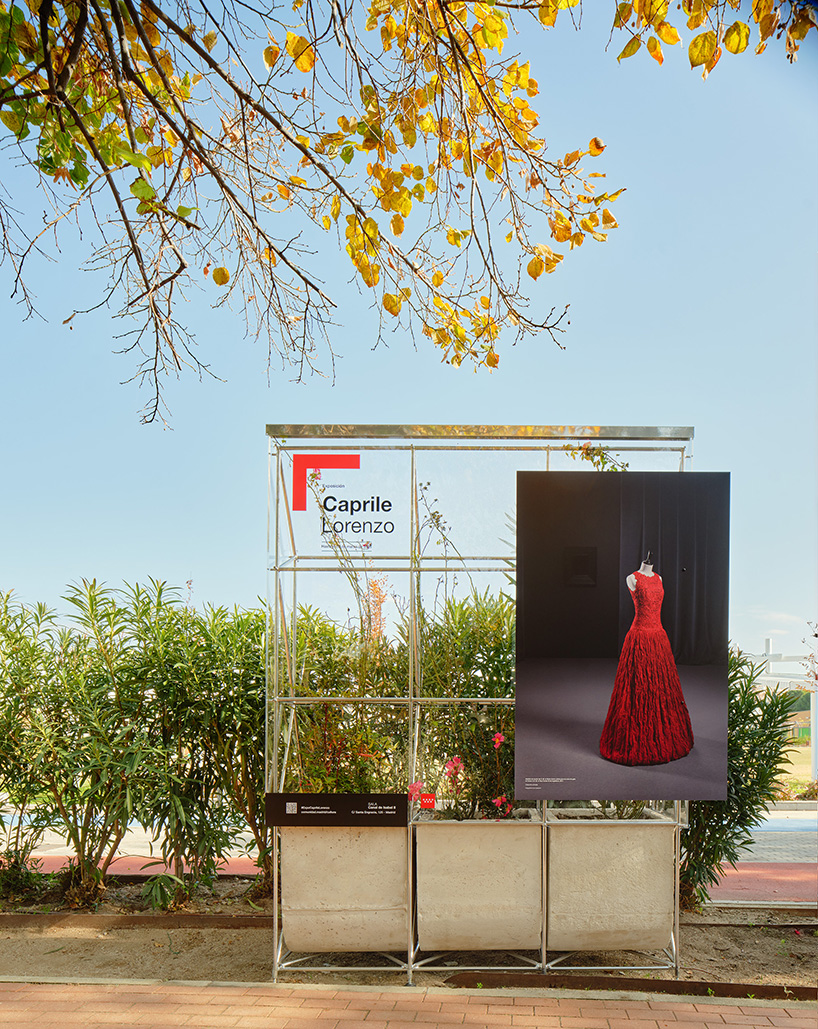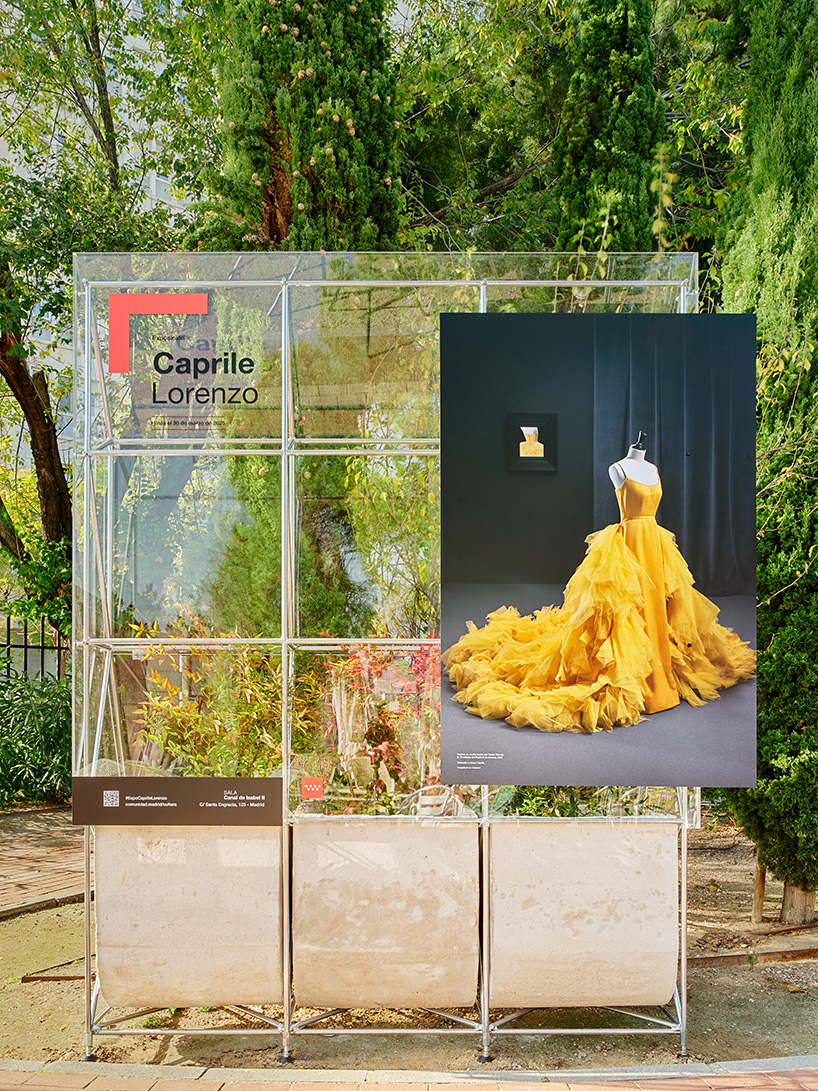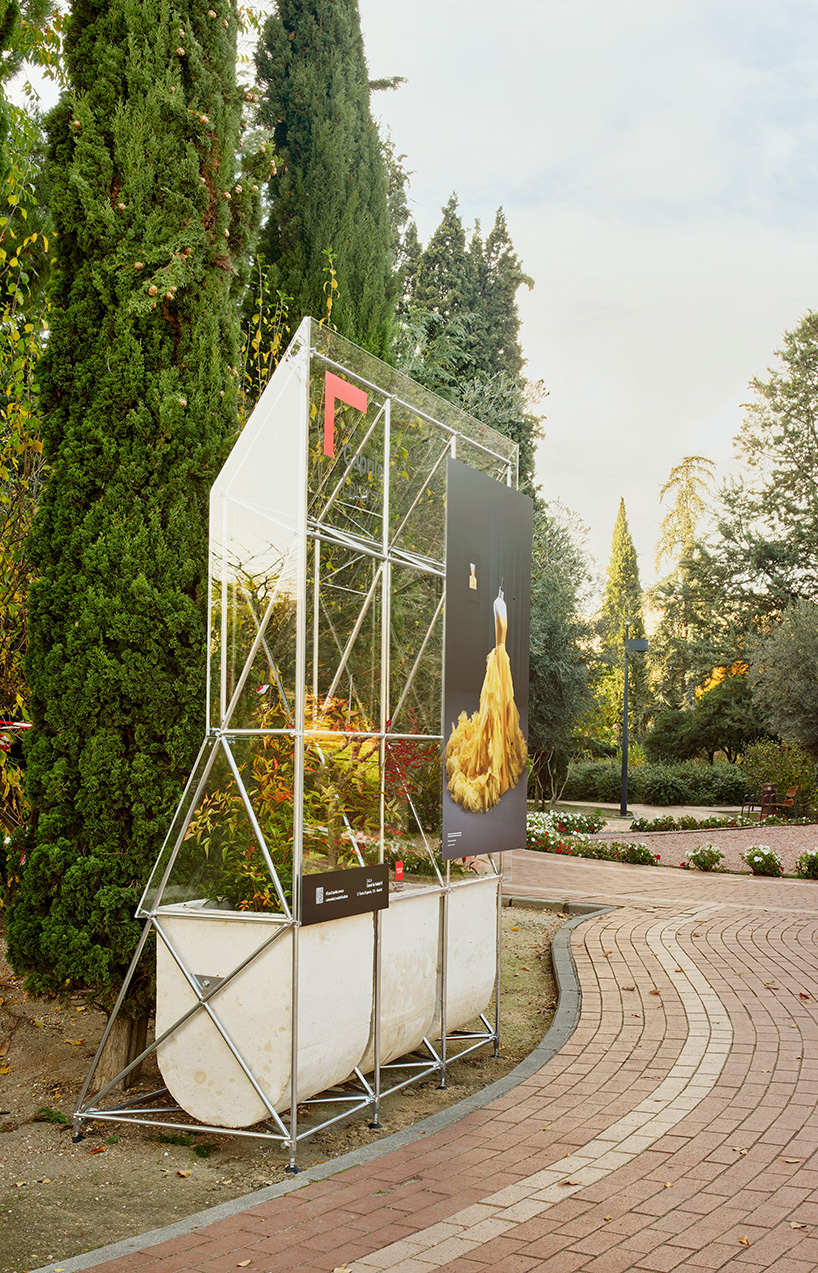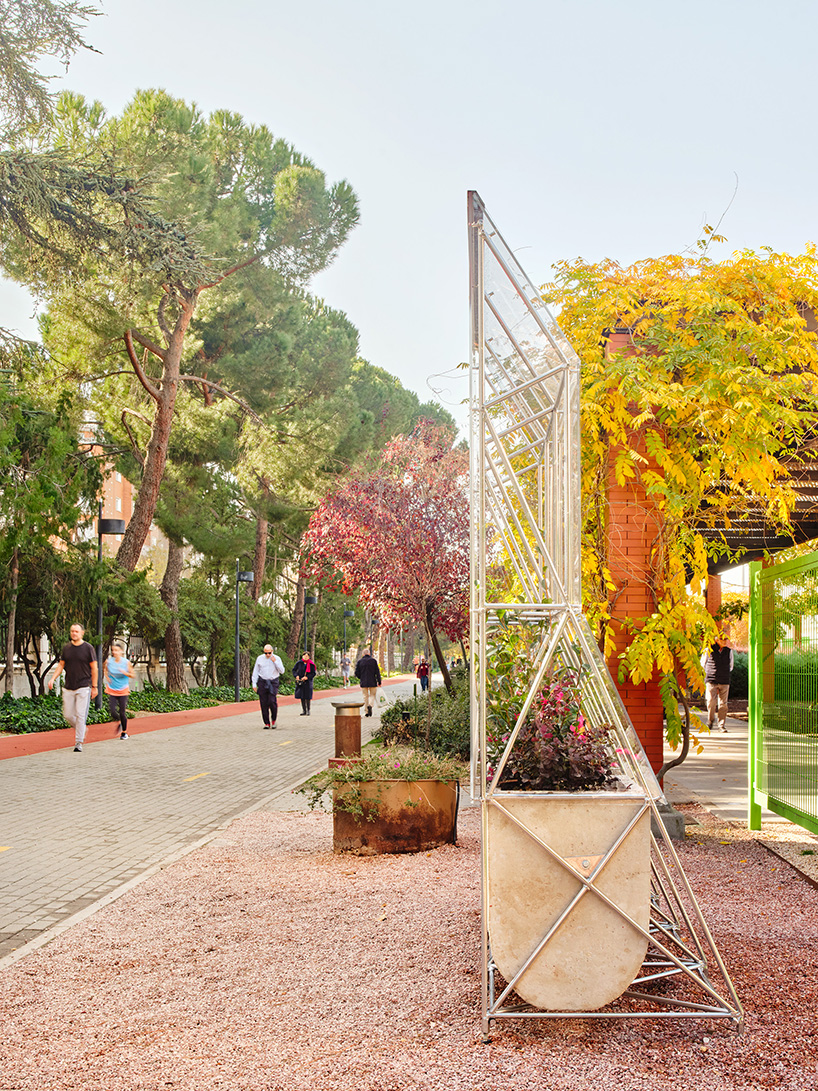Invernáculo Integrates Cultural Exhibitions into Urban Fabric
Invernáculo is a pilot initiative by the Madrid Regional Government that explores new methods of communicating cultural activities in urban space. Instead of relying on conventional advertising formats, it introduces billboard-greenhouses that extend exhibitions into the public realm. The system integrates exhibition content into greenhouse structures, displaying large-format commissioned images to create an open-air extension of the advertised exhibitions. The project conceived by Lluis Alexandre Casanovas Blanco proposes an alternative to posters, banners, MUPIs (Urban Furniture as Information Points), and OPIs (Illuminated Advertising Objects) by incorporating elements of urban furniture. It is part of a broader research effort examining new interactions between cultural institutions and public space, building on previous projects such as Exedra and Three Landscape Essays.
Invernáculo utilizes a greenhouse as a structural support for large-scale images commissioned from photographers and artists. These images reinterpret exhibition pieces, forming an additional layer of visual content in an outdoor setting. The first iteration of the system is located near the Canal de Isabel II Exhibition Hall and the adjacent Third Reservoir Park, where site conditions influenced the design parameters. The park, positioned over one of the four water reservoirs of the Canal de Isabel II, exemplifies the challenges of integrating structures into urban landscapes shaped by subterranean infrastructure, such as parking facilities, utility networks, and access points.

all images by Jon Cazenave
metal frame and concrete planters compose Invernáculo
The billboard-greenhouses consist of metal frames designed to hold images. Their structure references the fencing design on the rooftop of Madrid’s Colegio Maravillas by Alejandro de la Sota, emphasizing the spatial characteristics of urban roofs. The frames are enclosed with transparent methacrylate sheets, forming transportable greenhouse units or Wardian cases, controlled environments for species requiring specific conditions. Prefabricated concrete planters serve as the foundation, providing both rooting material for vegetation and integrated water storage. The added weight ensures stability while allowing for transport and relocation.
Designed for potential expansion across the city, Invernáculo by designer Lluis Alexandre Casanovas Blanco exists between greenhouse typology and museum display structures. Without conventional wall cladding, it reveals an exposed framework that accommodates new forms of growth and adaptation. The structure functions as both an independent urban element and a prototype for architectural experimentation.

Invernáculo reimagines urban advertising by integrating exhibition content into greenhouse structures

billboard-greenhouses display large-scale commissioned images, extending exhibitions into public space

a system of planters serves both as a foundation and as a medium for plant growth



